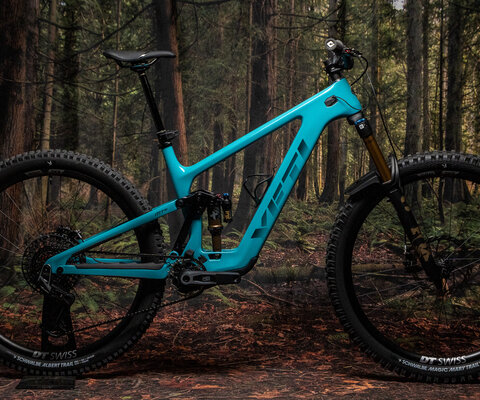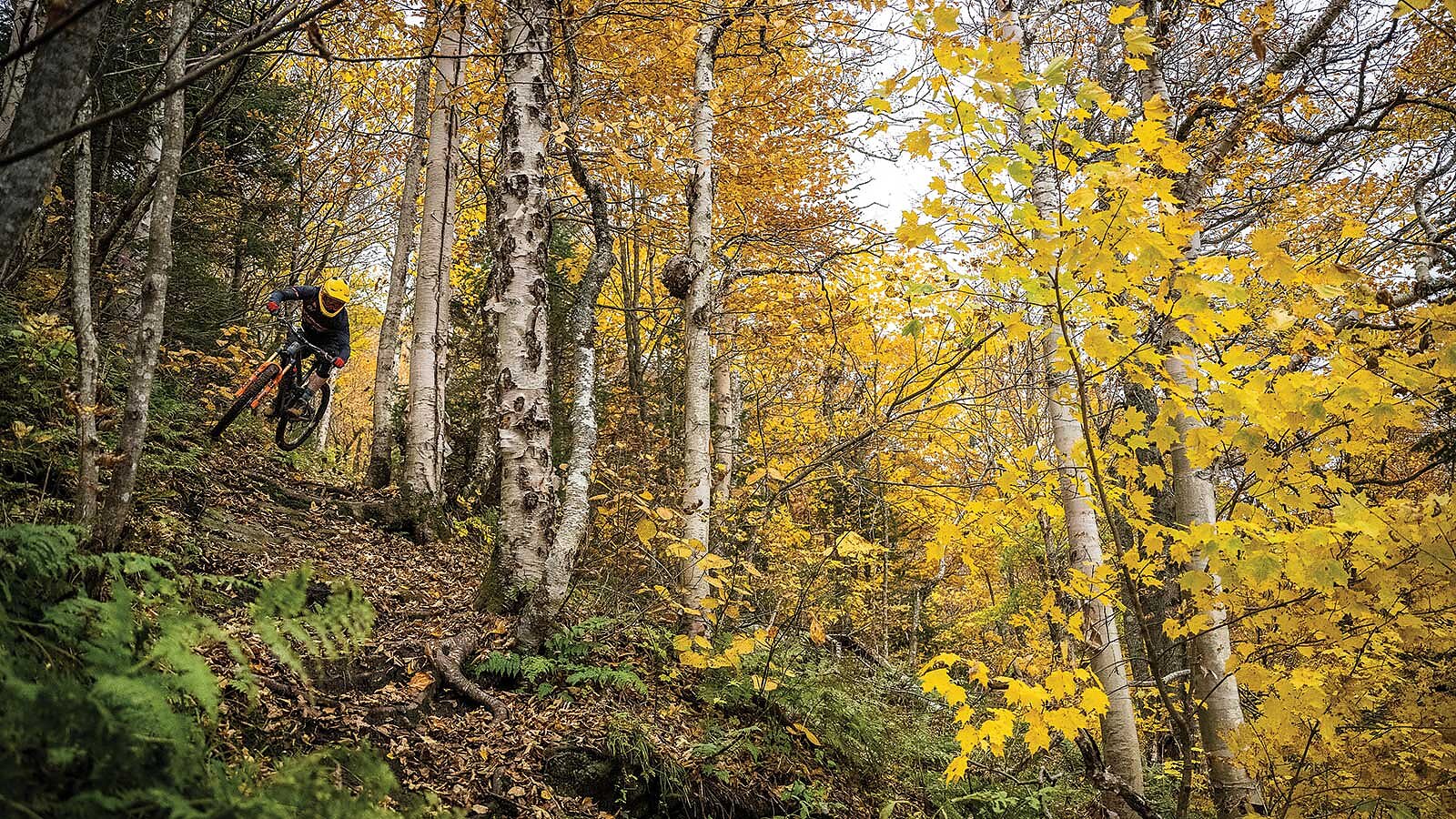
The Green Is Golden Paradigms for Growing Recreation Abound in Tight-Knit Vermont
Words by Berne Broudy
When Vermont’s storied Bolton Valley Resort first decided to spin lifts for mountain biking, it built off a network of rogue trails scraped in throughout two decades by a brotherhood of riders.
For the better part of 20 years, they pedaled to the top of Vista Quad to ride what most considered to be terrifying, technical old-school descents with wooden features in a permanent state of disrepair. When the DesLauriers family bought back their beloved ski area, they didn’t plow these trails under. Rather, they invited the builders and riders to get together and asked if they would team up to modernize the trails with the help of resort and trailbuilding company Gravity Logic.
That kind of people-first partnership makes Vermont mountain biking mind-blowingly cool. Not only is the terrain mentally and physically engaging, but the overall community vibe is also welcoming and friendly because the trails are overwhelmingly built using cooperation, collaboration and stoke.
At 157 miles long and between 42 and 90 miles wide, the Green Mountain State is a special place where riders, conservationists, farmers, public land managers and private landowners are building a mountain biking utopia.
It wasn’t always this way. While mountain biking got an early start in Vermont, and a statewide advocacy organization—the Vermont Mountain Bike Association (VMBA)—was formed around 1997, riders weren’t very keen to organize. Back then, many locals tried to keep their trails secret.

Most of them were loose, rocky, slippery, rooty and barely there. Nothing was mapped and access was granted by word of mouth. Dragonback, the only trail in the town of Richmond, was a deer path up a power line to a pond on private land. At that time, the modus operandi was to ask for forgiveness rather than seek permission—and to play dumb when someone got mad.
It wasn’t sustainable. Around 2011, a crew of riders brainstormed how to make mountain biking a less-clandestine affair under the umbrella of the VMBA. At one meeting, Tom Stuessy, an educator from Wisconsin who had relocated to Vermont, described his vision for organizing mountain bikers under the VMBA. Stuessy wanted to charge dues and funnel that money back to local chapters. He was almost laughed out of the room. But no one else had a better idea, and no one else wanted to run the VMBA. So it was handed over to Stuessy with the caveat that the organization had $3,800 in the bank and if he wanted to earn a salary, he had to raise the money to fund it.
By the time Stuessy stepped down in 2020, not only did Vermont have more than 1,000 miles of mapped trails, half of them on private land, but the VMBA was the largest state-wide mountain bike organization in the country, with 28 chapters and more than 7,600 members. Volunteers logged more than 30,000 hours of trail work annually. And while Vermont still had a healthy dose of old-school and black-diamond descents, it was also home to a whole heap of new flow trails, intermediate singletrack, beginner zones, skills parks, pumptracks and groomed fat biking systems to round out the state’s two-wheeled recreation portfolio.
The lift-served scene also had exploded. Stuessy changed how and where people recreate in Vermont during a period when the state was transitioning from having more cows than people. While family-owned dairy farms shuttered their stalls and barns became developer eye candy, he nudged property owners to treat land as part of the commons for locals and visitors alike. An economic boom stemming from this new-found line of thinking is now being fully realized in small towns and villages across Vermont.
This state’s trail diversity, excellence and thrill are hard to top—hardwood forests brimming with schist outcroppings; stunning views at the top of long climbs; lakes, rivers and waterways that cool the air and provide a brisk dip of relief after a sweaty, humid day of pedaling. Behind private houses, ribbons of brown dirt spill down maple-and-oak-covered hillsides. Trails extend from one person’s land to their neighbor’s land and then onto the next neighbor’s land. Almost all of it is mapped and open to the public.
STUESSY CHANGED HOW AND WHERE PEOPLE RECREATE IN VERMONT DURING A PERIOD WHEN THE STATE WAS TRANSITIONING FROM HAVING MORE COWS THAN PEOPLE.
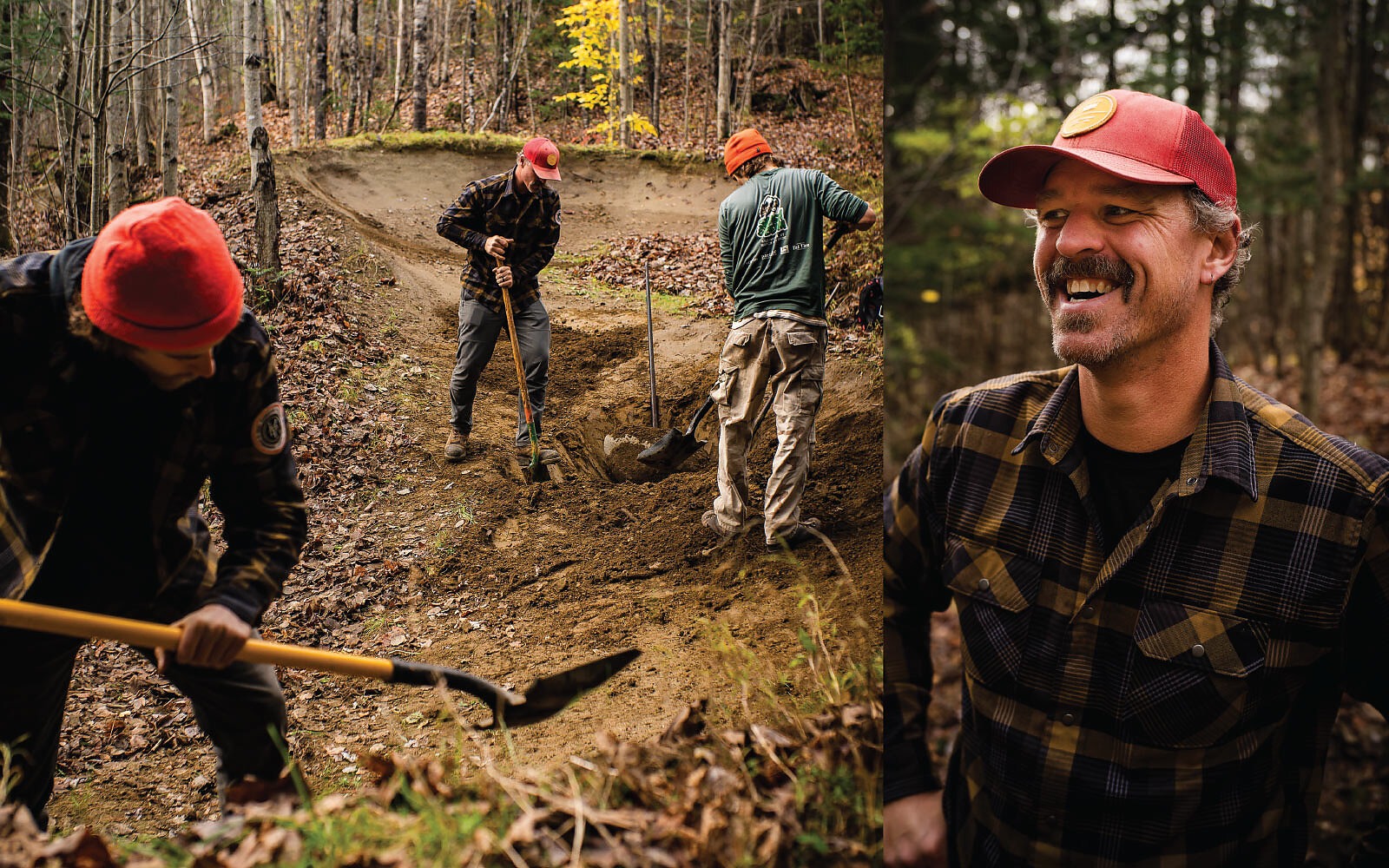
“Part of what gives Vermont its unique flavor is that it’s small,” says Louise Lintilhac of the Lintilhac Foundation,
which has funded VMBA since Stuessy took the helm. “Instead of dealing with wilderness issues, here we work through the nuances of navigating when a trail runs through someone’s property. But because everyone knows each other, you can strike up a conversation, and that’s how trail access is gained, by people talking to their neighbors.”
Historically, Vermont’s private landowners have been liberal in allowing access to hunters and hikers. More recently, snowmobilers and Nordic skiers have built extensive trail networks primarily on private land. Now, mountain bikers are doing the same.
“Our farmers love getting people outside,” says Nick Managan, marketing manager at Cabot Creamery Cooperative, a major supporter of VMBA and Vermont mountain biking. “When we saw the volunteerism going into
mountain bike trails, it felt like a natural fit to honor that work and to celebrate trails as a resource for communities to come together.”
More than half of Vermont’s mountain bike trails are on private land. The remainder are on town, state and federal land. Federal forester Holly Knox from Vermont’s Rochester Ranger District not only championed working with VMBA chapters to build trail, but she also created a knowledge base she’s shared with colleagues working with trails-focused non-profit groups, leading to greater access in New Hampshire’s White Mountains and New York’s Adirondack Mountains—and hundreds if not thousands of acres being opened to skiers and mountain bikers.
Knox says that engaging mountain bikers made her job easier by helping to transform federal land into a resource for taxpayers. By identifying areas appropriate for trails, allowing grassroots clubs to build out those networks, it essentially stopped illegal building through self-policing and directed energy toward zones with legal access.
Vermont is a patchwork of northern hardwood forests peppered with quaint villages. Here, main streets are the hub of the community. They’re where you pick up groceries and catch up on the latest news over a cup of coffee. They’re where many riders park, eat, drink and pop into a shop for a repair or tune-up.

Not only does the state have superb and ever-growing access, but it also has an incredible diversity of trails. There aren’t many 50-mile epic loops, but there is more than enough variety to suit all riding preferences. You name it—beginner, intermediate, expert, old-school tech, new-school flow, freeride, shuttle, lift-served and even winter fat bike trails—it’s all here in spades. And the state’s trailbuilders have developed solid, sustainable trailbuilding practices for Vermont’s soils and ecology.
“The number of places where you can have totally different ride experiences within an hour or two’s drive is underappreciated in the national scene,” says Nick Bennette, VMBA’s executive director since 2021. “That’s one of the things that makes riding in Vermont special. So do landowner-friendly recreational use statutes that make opening private land to recreation extremely low risk.”
For Lintilhac, part of Vermont’s riding attraction lies in its accessibility.
“A local network lets you get outside for the hour you have between dropping off kids and making dinner,” she says. “We’re trying to create a world where people can achieve work-life balance, and access is a huge part of that equation.”
In a state with extremely limited public transportation, Kate Wanner, a senior project manager at the Trust for Public Land, believes bringing parks closer to where people live is important, not only for more equitable access, but also for “decreasing the carbon emissions of getting to where you want to recreate.”
But access isn’t just about being able to ride to a trailhead. Because mountain biking is an expensive sport, a big focus of Vermont Huts’ plan is growing its F.O.R.E.S.T. (fostering outdoor recreation, education, sustainability and teamwork) program to invite underrepresented communities and individuals onto the trail and into nature. The program was initially youth-focused, but Vermont Huts Association (VHA) program manager, Dani Kehlmann, will expand F.O.R.E.S.T. to people of color, indigenous people and the LGBTQ community.
This year, the VMBA is partnering with Vermont Adaptive and Vermont Pride Rides to support more diversity on
trails. Some VMBA chapters are rebuilding bridges to meet adaptive standards and Richmond Mountain Trails is building Vermont’s first adaptive-friendly network on private land in Bolton, Vermont.
“WE SEE MOUNTAIN BIKING AS A WAY TO EVOLVE HOW WE INTERACT WITH LAND USE IN THE STATE OF VERMONT. WHEN PEOPLE GET INVOLVED, THEY CARE MORE ABOUT THE LAND’S FUTURE, ABOUT CLIMATE CHANGE, ABOUT PROTECTING THAT LAND.”
— LOUISE LINTILHAC
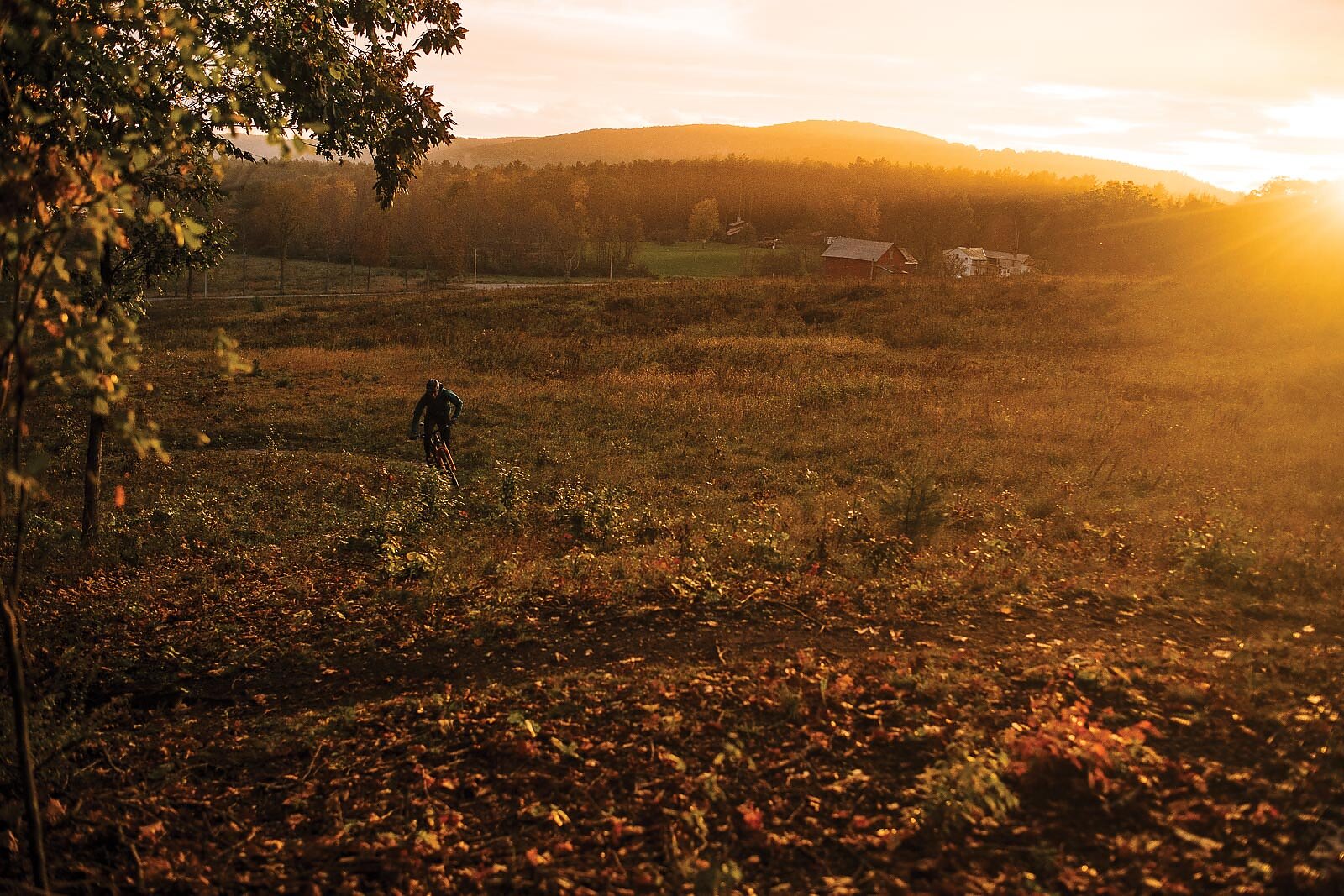
Knox places value in outdoor recreation’s tendency to instill its practitioners with a sense of respect and care for the landscape, thus leading to more meaningful consideration of finite natural resources.
“We see mountain biking as a way to evolve how we interact with land use in the state of Vermont,” Lintilhac says. “When people get involved, they care more about the land’s future, about climate change, about protecting that land.”
Here, as everywhere, an increasing number of recreational enthusiasts is causing systems to become over-loved. For outdoor advocates working in Vermont, this is central to why more trails are needed. After all, mountain biking needs land and land needs people to conserve and care for it.
One ambitious project is working to create more trail access points, while growing community economies and
opening up opportunities for all-day and multi-day rides. The Canada-to-Massachusetts Velomont Trail, a nearly 500-mile route consisting mostly of singletrack, is planned to pass through 30 Vermont villages and will be the longest hut-supported bike trail in the United States. In the summer of 2021, the Velomont Collective broke ground on the proposed trail, which will be built over the next decade and will connect existing networks throughout the state with 30-to-45 VHA huts along its corridor.
Not only will Velomont be a major economic driver for communities that choose to have the trail pass through, inspiring new businesses and supporting existing ones, but the trail corridor could also lead to conservation of 214,000 acres, according to Wanner.
“In parallel with the Long Trail and the Catamount Trail, Vermont’s end-to-end hiking and Nordic skiing trails, that not only opens up more recreation opportunities throughout the state, but it supports climate resiliency,” Wanner says. “Plants and animals will have migration corridors that help them remain healthy. The trail could spark new linear state parks. There are opportunities for expanding town forests, state and federal land. It’s a focused opportunity we’re excited about.”
Despite strong rider involvement, interconnectivity and the overall positive vibe that surrounds Vermont mountain biking, it’s not without challenges. The state’s unique Act 250, legislation that is paramount to maintaining Vermont’s rural character, also prohibits trail connectivity. The VMBA is working to maintain the intent of the legislation while getting permission for Velomont and other long rides.
Vermont trailbuilding is almost all privately funded, primarily by volunteer organizations.
It’s becoming common knowledge that mountain biking can infuse small towns with cash, though in Vermont there are more subtle and unexpected benefits.
“Having trails affects a community’s pride and identity,” Knox says. “The public health, economics and transportation benefits extend beyond the public investment we’re making in trail infrastructure.”
“IF YOU ACTIVELY PARTICIPATE, YOU GET WHAT YOU LOVE. WE STRUCTURED VMBA MEMBERSHIP IN A WAY THAT PROMOTED COMMUNICATION BETWEEN AND AMONGST CHAPTERS. THE SILOS CAME DOWN. RIDERS WORKED TOGETHER.”
—TOM STUESSY
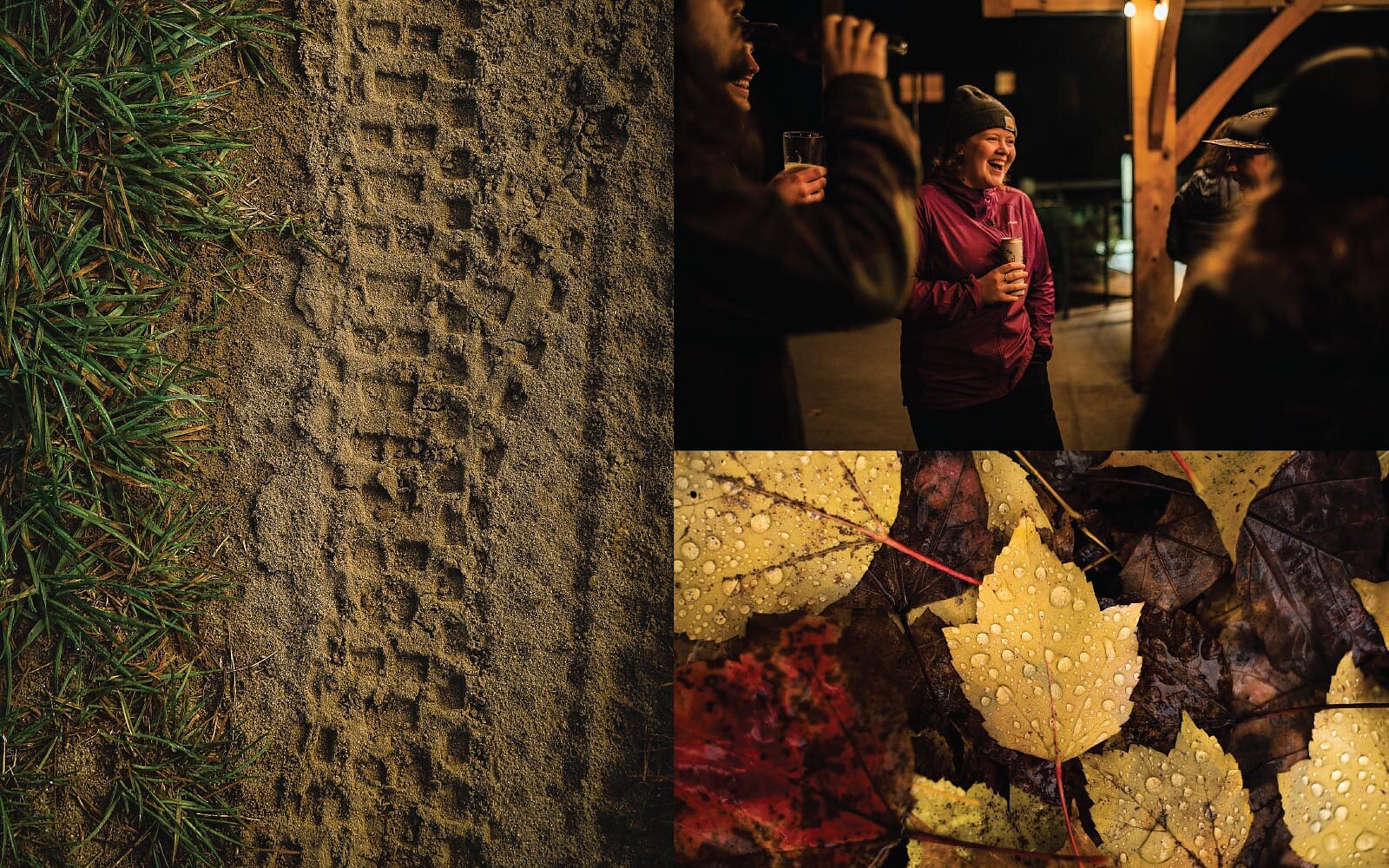
“The groups that build and maintain trails receive no direct benefits from tourism,” Bennette says. “As we evolve from a renegade sport in the shadows to leading in sustainable trail design and publicly mapped trails that draw visitors to the state, we need to develop new pathways for sustainable financial support.”
Still, the question of access remains. Management plans for 46,000 acres in two critical state forests have languished for years.
“Vermont’s Agency of Natural Resources is an important partner to the VMBA, and ideally we’d find a way to collaborate on thoughtful planning for trails on public land over the next decade,” Stuessy says. “But there are other stakeholders and strong lobbying groups that don’t want trails, and a lack of transparency between state agencies and trail-focused nonprofits that can leave all guessing if we’re working with each other or against each other.”
Cooperation with the United States Forest Service has deepened in recent years and Vermont’s trail groups are hopeful that a similarly collaborative, mutually beneficial partnership across state organizations is on the horizon.
Knox says the onus is on public land managers to evolve as recreation evolves. She takes an upfront approach to maintaining relationships with trail organizations, preferring to work “in the trenches” with her nonprofit partners. In Vermont, it’s been a win-win scenario: Volunteers gain an insider’s glimpse of the complexity of public access while Knox learns from key people living and riding in a community day-to-day.
Even with legislation and management plans that directly impact trails unresolved, Michael Snyder, Vermont’s Commissioner of Forest, Parks and Recreation, believes the future is bright for mountain biking in Vermont.
“The emergence of a grown-up statewide org—that’s the model that allows success,” Snyder says. “We have worldclass singletrack riding, and I’m proud of it.”
In the complex symbiotic web of recreation and community, the huts and trails also will bolster workforce development. In constructing the Velomont corridor huts, youth development organization Vermont Youth Conservation Corps will train 300 young adults in building trades and support their accreditation. The Vermont Outdoor Business Association and Vermont’s state colleges will offer a sustainable trailbuilding certificate program to train trailbuilders for whom long-term employment looks bright. The initiatives exponentially increase the economic impact of trails.
Looking back on nine years with the VMBA, Stuessy says what he is most proud of is that the organization made advocacy personal for mountain bikers.
“If you actively participate, you get what you love,” Stuessy says. “We structured the VMBA membership in a way that promoted communication between and amongst chapters. The silos came down. Riders worked together.”
